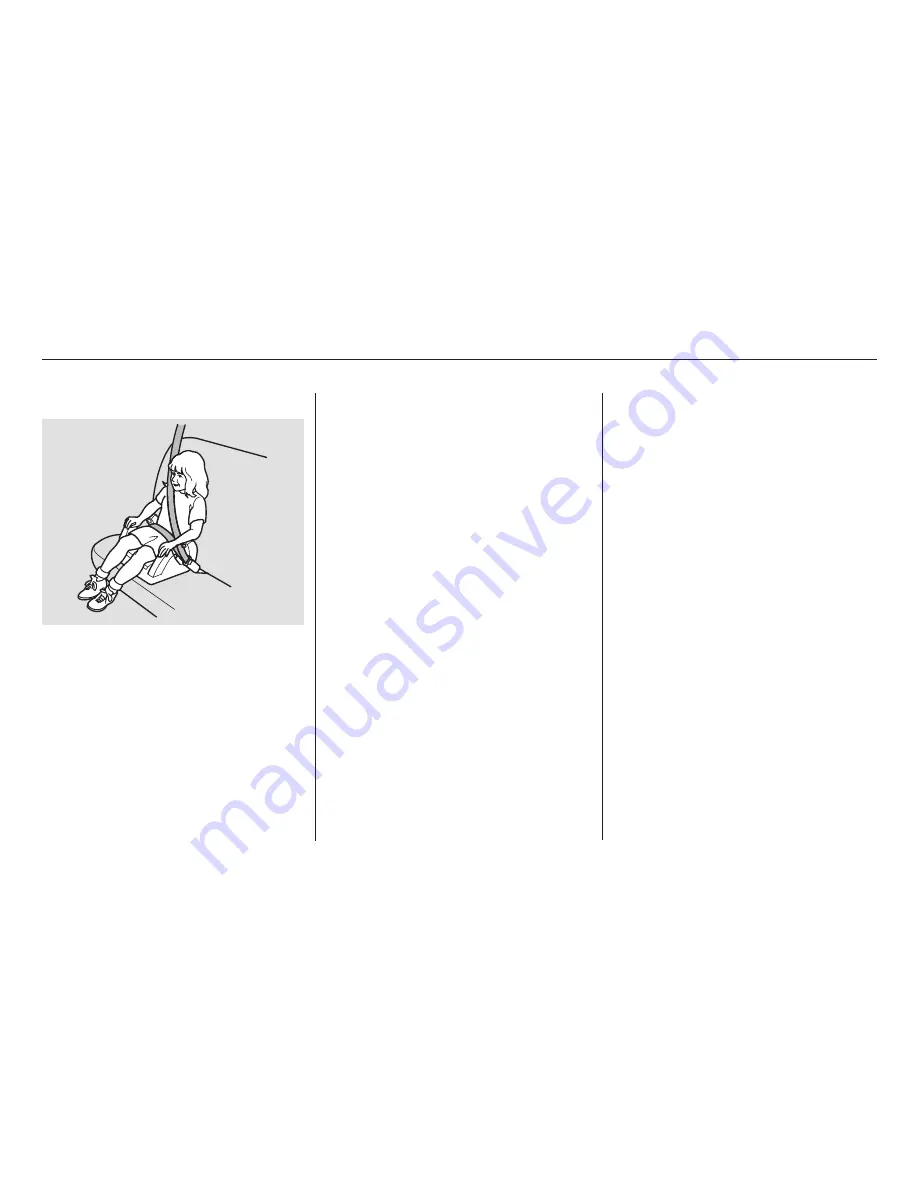
We strongly recommend that a child
who used a booster ride in a back
seat, not the front. Even if the
passenger’s front airbag is off, a
back seat is the safest place for the
child.
Whichever style you select, follow
the booster seat maker’s instructions.
If a child who uses a booster must
ride in front, move the vehicle seat
as far to the rear as possible, and be
sure the child is wearing the seat
belt properly.
The National Highway Traffic Safety
Administration and Transport
Canada recommend that all children
ages 12 and under be properly
restrained in a back seat.
The side airbag also poses risks. If
any part of a larger child’s body is in
the path of a deploying airbag, the
child could receive possibly serious
injuries.
If the passenger’s front airbag is on,
and it inflates in a moderate to
severe frontal collision, the airbag
can cause serious injuries to a child
who is unrestrained, improperly
restrained, sitting too close to the
airbag, or out of position.
Even with advanced front airbags,
the back seat is the safest place for a
child of any age or size.
A child may continue using a booster
seat until the tops of the ears are
even with the top of the seat-back. A
child of this height should be tall
enough to use the lap/shoulder belt
without a booster.
Even then, the child may still need to
use a booster seat. Note that some
states now require children to use
boosters until they reach a certain
age and/or weight. Be sure to check
current laws in the state or states
where you intend to drive.
Using a Booster Seat
When Can a Larger Child Sit in Front
Protecting Children
Driver and Passenger Saf ety
40
02/07/30 21:29:13 31S3V620 0045






























